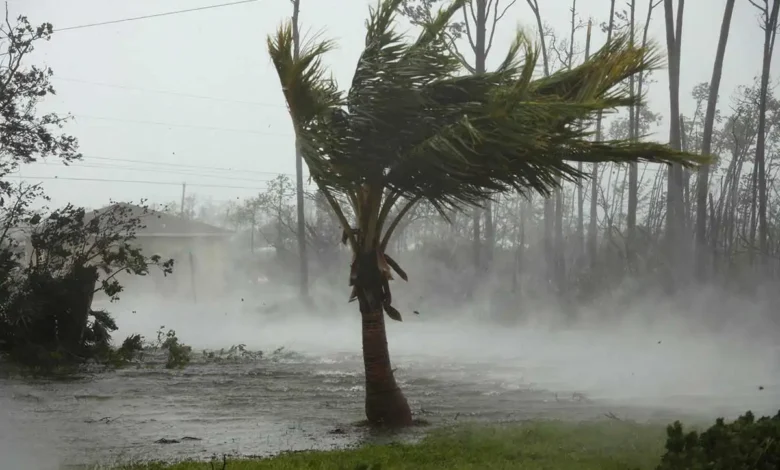Stormuring: What Causes This Phenomenon?

Have you ever felt the thrill of a storm brewing on the horizon? The air crackles with energy, and dark clouds gather ominously overhead. This phenomenon, known as stormuring, captivates both nature enthusiasts and casual observers alike. But what exactly causes this electrifying event? Is it mere chance—or does science play a role in shaping these awe-inspiring storms?
Join us as we dive into the fascinating world of stormuring, exploring its scientific roots, cultural significance, and safety measures for when nature unleashes its fury. Prepare to be amazed by the extraordinary power of Mother Nature.
The Science Behind Stormuring
Stormuring occurs when specific atmospheric conditions align to create intense weather phenomena. These events are often characterized by violent winds, heavy precipitation, and sudden temperature drops.
At its core, stormuring is the result of an intricate dance between temperature, humidity, and pressure. Warm air rises rapidly, creating low-pressure zones that draw in cooler air from surrounding areas. This movement generates instability in the atmosphere—an essential ingredient for powerful storms.
Humidity further amplifies this effect. When moist air condenses into clouds, it releases latent heat—an invisible burst of energy that fuels turbulence and intensifies the storm system.
Pressure differences add another layer of drama. As high-pressure zones collide with low-pressure areas, strong winds form, reshaping the sky and igniting the raw spectacle of stormuring.
Understanding these principles helps us appreciate the precise yet chaotic forces that make stormuring both magnificent and formidable.
Atmospheric Conditions That Lead to Stormuring
Stormuring thrives when nature’s elements converge perfectly. It typically begins in regions where warm, moist air rises into cooler layers of the atmosphere. As this air ascends, it cools, and condensation forms dense, towering clouds brimming with energy.
The temperature gradient—the contrast between warm surface air and cooler upper layers—creates a cycle of rising and sinking currents that feed the storm.
Meanwhile, humidity plays a starring role. The more moisture in the air, the greater the potential for rain, lightning, and thunder. When this moisture collides with cooler air aloft, the results can be explosive.
Finally, wind patterns determine the storm’s direction and strength. Mountains, coastlines, and even urban landscapes can influence how a stormuring event develops and spreads—turning it into either a fleeting squall or a multi-hour tempest.
The Role of Temperature, Humidity, and Pressure
These three atmospheric forces form the trifecta behind every stormuring event:
-
Temperature: Rising warm air drives convection currents, creating low-pressure areas that attract cooler air. This process powers the storm’s vertical energy.
-
Humidity: The invisible architect of storm intensity. As moisture condenses, it releases heat, energizing clouds and fueling rain or hail.
-
Pressure: The balance—or imbalance—between high and low pressure dictates wind strength. Sharp contrasts lead to sudden gusts and swirling air patterns that define stormuring’s dramatic flair.
When these elements interact in harmony, the skies erupt into a masterpiece of motion and sound—a living, breathing display of natural energy.
Historical and Cultural Significance of Stormuring
Throughout history, stormuring has held deep symbolic meaning. Many ancient civilizations viewed storms as divine messages—omens from gods expressing anger, power, or renewal.
In myth and folklore, stormuring often represents transformation. The chaos of wind and rain gives way to calm and clarity, reflecting the cyclical nature of destruction and rebirth.
Artists and poets have long drawn inspiration from storms. From Romantic painters capturing turbulent seas to musicians evoking thunder through symphony, stormuring embodies emotion, change, and raw energy.
Communities, too, have been shaped by shared experiences of enduring storms. Each event fosters resilience, reminding humanity of both our vulnerability and our unity in the face of nature’s might.
Common Misconceptions About Stormuring
Despite its frequent occurrence, stormuring is often misunderstood. Here are a few common myths:
-
Myth 1: It only happens during severe storms.
Fact: Stormuring can occur under various conditions, even during milder weather events. -
Myth 2: It’s just thunder and lightning.
Fact: While they may accompany it, stormuring involves a complex system of air movements, temperature shifts, and moisture dynamics. -
Myth 3: It happens without warning.
Fact: With modern meteorological tools, many stormuring events can be detected and tracked in advance. -
Myth 4: It’s harmless.
Fact: Even moderate stormuring can bring lightning strikes, flash floods, and strong winds—posing real risks if ignored.
Dispelling these misconceptions helps us approach storms with both curiosity and caution.
Real-Life Examples of Stormuring
Across the globe, stormuring has left its mark in unforgettable ways:
-
The Great Plains Storm (2013): Towering thunderheads swept across the Midwest, producing a dazzling display of lightning that lit the night sky for hours.
-
Florida’s Coastal Tempests: The Sunshine State regularly experiences tropical stormuring, where the clash of sea breezes and heat spawns short-lived but intense storms.
-
The “Superstorm” of 2012 (New York City): A collision of cold and warm systems created massive rainfall and winds, transforming urban streets into roaring rivers.
Each of these moments showcases the breathtaking duality of stormuring—its capacity to both terrify and inspire.
How to Stay Safe During a Stormuring Event
Safety always comes first. Here’s how to protect yourself when stormuring strikes:
-
Stay Informed: Keep track of weather alerts through apps, radio, or TV updates.
-
Prepare an Emergency Kit: Include essentials such as water, non-perishable food, flashlights, batteries, blankets, and a first-aid kit.
-
Seek Shelter: Stay indoors, away from windows, and avoid using electrical appliances.
-
Avoid Open Areas: If caught outside, find low ground and steer clear of trees, poles, and metal structures.
-
Keep Communication Open: Charge devices ahead of time and use them sparingly during the storm.
Preparedness transforms fear into confidence, helping you endure even the fiercest of storms.
Conclusion: Embracing the Beauty and Power of Stormuring
Stormuring is a stunning reminder of nature’s raw, untamed power. Beyond its roaring winds and flashing skies lies a delicate balance of forces that sustain our planet’s climate and rhythm.
To understand stormuring is to appreciate both its danger and magnificence. Each storm, while unpredictable, carries beauty—the flash of lightning, the deep rumble of thunder, the cleansing rush of rain.
By respecting its power and preparing wisely, we can safely witness one of Earth’s most breathtaking displays. Stormuring is not merely a meteorological event—it is a living testament to the strength, mystery, and artistry of our natural world.




